Photo
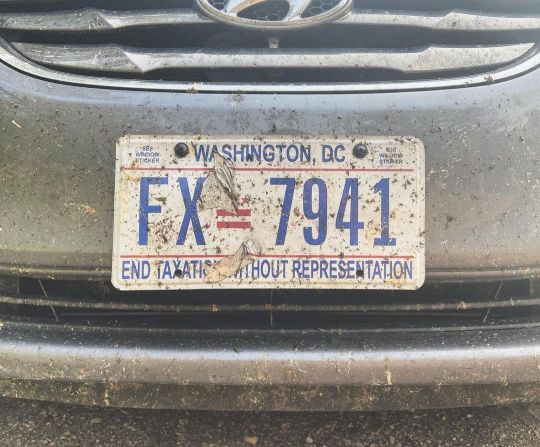
Home again home again jiggety jig (at Washington D.C.) https://www.instagram.com/p/CS0AQaFLVdBP-c1uNNwP0052xB08kNamAmZ_a80/?utm_medium=tumblr
0 notes
Text
Our Trip By The Numbers
Miles Driven: 8021
States Visited: 25
States driven through without getting out of the car: 8
$ paid in National Parks Entry Fees: $110
Cost of a National Parks All-Access Pass: $80
Sleepless nights spent regretting not buying the All-Access Pass: 3
Nights Car camping: 15
Nights Backwoods camping: 8
Miles Hiked: 150
Books read by Jaime: 10
Books read by Sam: 3 (They were long? They weren’t that long.)
0 notes
Photo

After 25 states and 8021 miles, I’m SO excited to be reunited with these two monsterssssss. https://www.instagram.com/p/CSz9rkjnIa7/?utm_medium=tumblr
0 notes
Photo

Foggy morning on the Androscoggin (at Brunswick, Maine) https://www.instagram.com/p/CSRdJgcrgGSiTeGxOuMd5hTaPk4Zoft996O5XY0/?utm_medium=tumblr
0 notes
Text
Sawtooth
We woke up on the morning of our fourth day in the Sawtooth wilderness feeling spry. It can take a day, or two, or three before the rhythm of backpacking— wake up, wolf down some instant oatmeal, slurp up some instant coffee, shoulder a 35 pound pack and start the day’s climb—begins to feel right. This was our morning.
A miracle: the skies had truly cleared of wildfire smoke for the first time since setting off from Grandjean. Good timing, too: our day ahead would be perhaps the best of the trip — up and over Cramer Pass, beneath “The Temple,” down past the Cramer Lakes and up again to Alpine Lake, reputedly a gem. We hit the trail with bounce in our step.
Three, four, five miles into our hike we were still having fun, even as we began to wonder — was it possible that Hidden Lake was, in fact, so hidden that we wouldn’t see it from the trail? When would we hit the killer climb up to Cramer Pass? Slogging through overgrown brush and clambering over deadfall — all of which felt oddly familiar — we encountered a group of five friendly outdoorsmen from Seattle.
“Morning.”
“Afternoon.”
“Am I right that we’ve got a climb ahead?”
“Oh no, it’s all downhill from here.”
“Hmm.”
“Where are you trying to get to?”
“Well we were aiming for Cramer Lakes…”
“Oh you’re a long way from there. This trail goes down to Grandjean.”
“Oh my god.”
Jaime caught up.
“We took a wrong turn.”
“I thought so.”
“It’s a bad one.”
“How bad?”
“The good news is that we’ve been making great time. Covered a lot of miles.”
“And?”
“That lake was Elk Lake. This is the trail we hiked in on our first day.”
“How…”
“Five miles ago. Missed a turn.”
“God damn it.”
“Actually more like five and a half.”
Oh yes, there were signs. Including literal signs made of actual wood. Two of which we somehow blew blindly past, and a third: seen but egregiously misinterpreted. Also the creek we had crossed thrice, which, had we been paying close attention, we might have noticed was flowing in the wrong direction. Or beautiful Smith Falls, which we had passed two days before. Or the 2.4 miles of the South Fork of the Payette Trail we had hiked on day one — the most grueling and unattractive stretch of trail we had yet encountered — you would think we might have realized something was amiss. And yet.
“We could just hike out.”
“It would be eleven more miles.”
“So we backtrack.”
“Five and a half. Uphill.”
“We’re spending an extra night out here, aren’t we?”
“I think so.”
“Do we have extra food?”
“We have enough food.”
“I hate this.”
So we backtracked. An eleven mile detour, all told, with 1500 feet of elevation lost and then gained agin, for no reason, on unremarkable, overgrown, valley trails with views of nothing but dense forest, overgrown with scrubby mountain brush. The last few miles, a steady and grueling climb, brought us back to where we had missed our first sign, six hours before. We collapsed at the intersection, refilled our bottles, and snacked on salami — the promise of which was all that had gotten us up the hill. Mosquitoes and black flies swarmed, and the sky, which had begun the day clear, turned a pinkish gray as wildfire smoke began to dim the sun again.
“Why do we do this?”
“Good question.”
Onward to Hidden Lake, not so hidden after all. After dragging ourselves over 14 miles — 3 miles of forward progress from our last camp — we collapsed on a grassy shoreline, and rinsed our scratched and bruised bodies in the glassy frigid water. The lake sat beneath two pointed cliffs, side by side — one of red stone, the other gray— and the sun set early in the narrow valley. Trout jumped, snatching flies from the water’s surface, and pair of mergansers jetted around the lake, snatching the fish in turn. Exhausted, we fell asleep listening to hermit thrushes whistling their fluting ethereal song over the quiet rush of cascades tumbling down the cliffs, filling the lake.

We woke up, wolfed down some instant oatmeal, slurped up some instant coffee, and began the day’s climb. Up and over Cramer Pass, beneath “The Temple,” a tower of red sandstone capped with a knobby monolith that might well have been the icon of some desert religion. We descended again to the three Cramer Lakes, each one cascading to the next, down further to cross a rushing stream of snowmelt and spring water. We dipped our hats and bandannas in the almost-freezing water to drip down our necks and backs in the hot afternoon. Then we’re climbing again, this time twice as high, twice as far, to Alpine Lake, a pristine tarn carved into the side of the slope, a fine place for a salami break. Then higher, sweating our way up to the day’s second pass. We looked down on the Baron Lakes, where we would camp for the night, and across the lakes to Warbonnet Peak and Monte Verita, grey and purple in the late afternoon shadows.
“This is why we do this.”
“Yeah.”
One reason, anyway. The most obvious reason. If you did a survey of the people who somehow ended up at the top of the pass above Baron Lakes, this would be the number one reason cited for braving the insects and the varmints, dealing with the aches and the rashes, and slogging up a mountain with a heavy pack: the views, the vistas, the landscapes, the panoramas. The drama of the mountains. It’s like cooking your own meal — it tastes better when you’ve worked for it, earned it, done it yourself. The view from the pass is more beautiful for the sweat and exertion dragging your body and your pack up the climb.
We got more the following day as we descended from the Baron Lakes, our final day on the trail. An oceanic valley opened up beneath us, ringed by steep cliffs and rockslides of red and grey and purple, Baron Creek turning into a 30 foot waterfall. You can’t find this outside the mountains, this sense of three-dimensional space. Of looking down a valley two miles wide as it falls away from your feet, three thousand feet down. Like standing in the greatest of civilization’s cathedrals, but one with enough open space to park a carrier group, with more room for a fleet of attack submarines below.
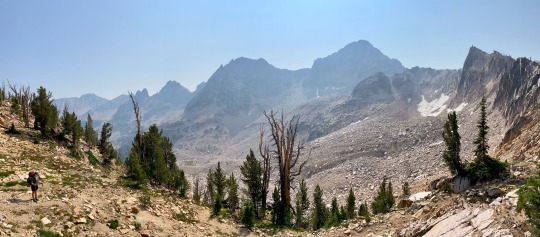
After five nights and six days, we have become the land. Smeared with the dust of an arid country, we blend in with the rock and dirt. And despite our daily dips in the alpine lakes of the Sawtooth, we smell like it too. That first shower will feel great. The first meal — Jaime’s been fantasizing about a tuna melt and French fries, Sam has been inexplicably craving pancakes — even better. This is also why we backpack. It feels awfully good to have done it.
More than just the relief and indulgence of returning to civilization, a week in the mountains offers a welcome reset on city life. I am a city person. I like living in a density of people, living within a stroll of most everything I need, nearby neighbors and friends. But I crave the balance offered by nature, by a week in the woods, a month in the mountains. We’ll return feeling refreshed, glad to be back, awed by the commonplace luxuries of modern urban living: a world’s worth of cuisines, at my doorstep in 20 minutes; humanity’s complete works of recorded music, in my pocket. We’ll be very glad to have done it, for all its ups and downs. And, more immediately, we’re glad to be done.
“I’m sore.”
“Me too.”
“My blister just popped.”
“Ew.”
“I feel great.”
“Me too.”
Leaning on the car, we ease off our boots. The horseflies are back at this lower elevation, and their buzzing takes us back to last week when we tightened our laces and adjusted the straps on our pack in preparation for starting our trip. We had arrived at Grandjean just a few hours behind the first wave of wildfire smoke. Hiking in July, we thought we’d beat the wildfires to the punch; no such luck. So we started our hike in a haze - literal and figurative - wondering if we’d be walking up mountains for 54 miles with the reward of smoggy vistas waiting at the passes and peaks.
The first day’s hike didn’t lift that haze. The trail was overgrown, not often used, with deadfall lying across our path requiring us to clamber over dead trunks or bushwhack through brush to get around. Horseflies dogged us, buzzing and biting. As we climbed, sweating, copses of trembling aspen yielded to a forest of ponderosa pine, white spruce, douglas fir, and horseflies yielded to mosquitoes. Six miles up the trail, we encountered two fellow hikers, who informed us that the first good campsite was another eight miles ahead, and that they were churning out 20 miles in a day to get out of this godforsaken wilderness pronto. Terrific.
Fortunately, they were wrong, and we soon found a very fine place to pitch a tent next to a small waterfall. The Payette River’s headwaters split and cascaded down on either side of a great red rock, and every few seconds, the waters surged and a shower of snowmelt would surge over the rock itself, spraying into the air.
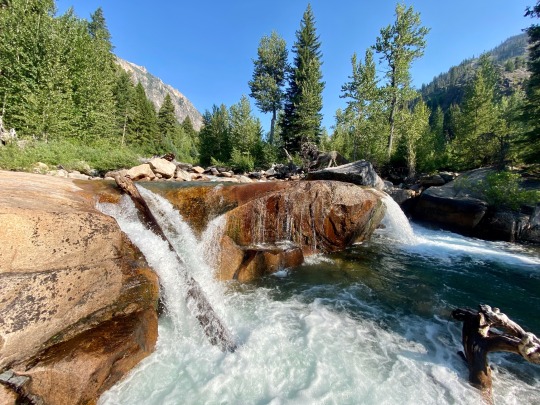
A western tanager — electric yellow body, reddish head, and jet black wings — flitted through the campsite. So did chipmunks, rushing around frantically to spread the good news that a pair of slovenly campers had finally arrived, and the summer’s harvest was here at last.
“Look at the cheeks on that little guy.”
“He’s just dying to fill them up with our trail mix.”
Joke’s on us. His cheeks were already full. We turn around, and our bag of trail mix has been chewed open, our week’s supply of almonds, cashews, chocolate, and cranberries pawed through and looted.
“Oh no!”
“Tou thieving little bastard! You bandit! Son of a bitch!”
He was long gone, and presumably the life of the party in whatever chipmunk den he had retreated to. Not wanting to contract whatever rodent virus the chipmunks might have left on our nuts — and not wanting to reward their banditry — I fed our entire supply of trail mix to the fish, swearing profusely as each morsel washed downstream. We have enough food without it, I think.
Our second morning, we awoke to what appeared as a fine morning mist; the pines in the middle distance enveloped in a grey cloud; the ridgeline hazy. But central Idaho is a dry country, this time of year. There is no mist. The wildfire smoke has thickened, and an image of peace transforms to a vague and grim picture of threat and foreboding. We shoulder our packs and resume the climb; eleven more miles on the trail, plus half a mile vertically.
As we walk we get our first glimpses of sawtooth silhouette. Steep rocky cliffs capped with jagged ridgelines, hazy and dark in the smoke against the grey sky. We cross a cold stream, boots off, sandals on, almost knee deep in the rushing icy water. We stop to rest — our first salami break of the trip! — beside Smith Falls, a roaring cascade.
“Do you have the hand sanitizer?”
“I thought you had it.”
“Nope.”
“Where’s the soap?”
“Packed with the hand sanitizer.”
“We’re disgusting.”
The day has gotten hot, and our final mile is a savage climb, switchbacking up the rough talus slope of Mt. Everly. Closing in on 9000’ feet of elevation, we stop to catch our breath every few steps and soak in the panorama behind us: smoky and grey, but astounding nonetheless, with miles of views into wilderness valleys ringed by sawtooth ridges.
Finally, we climb high enough that a lake reveals itself as a sliver of blue, and then it’s at our feet. Everly Lake is a sapphire droplet, water clear to the bottom, the gently rippling surface sparkling azure in the late afternoon sun. It sits beneath the east face of Mt. Everly, a scree cliff dropping a thousand feet to the water’s edge, across from where we set up camp. We haven’t seen another soul all day, and we have this lake very much to ourselves.

Why do we do this? An interesting question because, in case it’s not obvious, backpacking trips involve a considerable quantity of suffering. We do it for the satisfaction and rejuvenation of completing a trip, certainly. And obviously the views — even when they’re gray and hazy. But this — this is really why we hump heavy packs up rocky cliffs, put up with clouds of insects and wildfire smoke, endure blisters and aches and altitude sickness. There is freedom in solitude (dual solitude, in our case), and real solitude is a hard thing to come by. Hot and sweaty and ragged from the climb, I splash into the glass-clear snowmelt of Everly Lake, naked as a wild animal.
When telling people about our big trip west, our route through Wyoming, Idaho, Montana, the most frequent first response was “ah, you’re doing the parks.” Meaning the National Parks, those natural American wonders with scenic byways leading drivers to the parks’ iconic sights, visitors’ centers full of gifts and amenities and fun facts, and influencers dangling their immaculate bodies over sheer cliffs to rack up the likes. Not so. We are, in fact, avoiding the Parks at all costs, instead seeking solitude in forests and wilderness — the likes of the Sawtooth.
In March, we took a trip to Great Smoky Mountain National Park, hoping to hike and revel in some of the finest scenery you’ll find east of the Mississippi. The joke was very much on us. Day one, we spent two hours in the car, inching toward a trailhead, in a miles-long snake of cars and trucks and RVs. In July and August, Yellowstone National Park transmutes from the largest national park in the lower 48 into the biggest parking lot on the North American continent. People sleep in their cars on the road to Zion, in the hopes of snagging a shot at a sunrise selfie.
It’s been fifty years since Edward Abbey wrote Desert Solitaire, which I’ve been reading on the trail. The book is an account of his summers as a ranger in the park that would eventually become Arches. He lamented road-building in National Parks, and proposed banning cars altogether, a fine idea. Many of our Parks did alright for decades, even with their roads and scenic byways; today’s plauge, clogging those roads and viewpoints and even some of the trails, is known as Instagram. The secret is out about the natural beauty of the American west, and the hoards have flocked.
Of course, not everyone out here in nature is seeking solitude. That’s fine. Certainly, every person has a right to see and experience earth’s great wonders. But even for the casual nature tourist, I would posit that the Grand Canyon would be better enjoyed with enough room to swing one’s arms. What to do about it? Who knows. The French are de-marketing their national parks, advertising the flaws and shortcomings of the country’s great natural sites; another fine idea, maybe there are others. At any rate, Abbey is lucky to be dead; the sight of hoards of selfie-snappers crowding for the perfect pic at Mesa Arch would kill him over again.
For those who do seek something approaching solitude, it’s harder and harder to find. We’ve avoided the National Parks, but even many of the forest campgrounds are full beyond the brim. We’ve spent evenings driving around the backwoods, trying in vain to find a good place to camp that isn’t already clogged with RVs. And I’m not here to tell anyone how to enjoy nature, but I am here to tell you that the RV is a blight upon American wilderness. Pulling into a campground in a forgotten corner of the Black Hills, and listening to a fleet of generators run for hours is, shall we say, irritating. If your idea of exploring America’s natural beauty involves parking a bus that costs as much as Lamborghini in the woods and running a generator 16 hours a day to keep your A/C running and your TV on, why not save yourself the trouble — and do the rest of us a favor — and stay home?
As one friend likes to say, gazing up at a spectacular mountain view and taking a contented sigh: “We mean nothing.” In the city, it’s hard to see yourself outside the contemporary, the immediate, the urgent. Put yourself in nature, in the shadow of a great peak or at the bottom of a colossal canyon, and it becomes possible to see your ego and your consciousness in a more accurate perspective: transient, insignificant. There’s freedom in that. And peace.
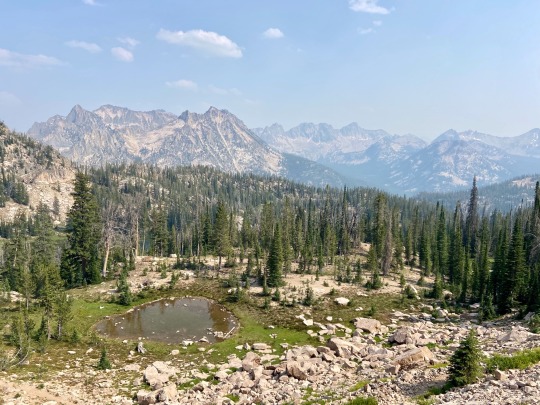
The chipmunks of Everly Lake share the thieving attitude of their cousins down the mountain. As we sat absorbing the last of the orange sun’s rays, we heard a rustling behind us, and caught one in the act trying to seize our sesame crisps. Rather than chewing through the bag and filling his fat cheeks with whatever they could carry, this greedy fellow had his tiny arms wrapped around the entire ziploc bag, attempting to make off with the whole kit and kaboodle. Not today, chipmunk. We learned our lesson. Our food bag didn’t leave our sight the rest of the trip.
We awoke the next morning to the smell of a campfire burning outside our tent. Poking my head out into the grey predawn light — no campfire, just a thick cloud of wildfire smoke. The far shore was shrouded in haze, and our sparkling blue lake had turned dull; a grim sense of foreboding gripped us as we wolfed down our instant oatmeal, slurped up our instant coffee, and shouldered our packs to descend from Everly.
We hop from lake to lake through the southern Sawtooth, and, mercifully, the cloud of smoke thins as we go. Not a soul on the trail, as we dip our toes in lakes with wonderful names — Ingeborg, Spangle, Ardeth— and some quotidian names — Rock Slide, Vernon, Benedict. I regret leaving my binoculars in the car, we try to ID our avian companions anyway. Most will end up in our books as LBBs (little brown birds), curious peepers and cheepers. We do grow fond of the white-capped sparrow, which looks like it’s wearing a bike helmet and sings a song that sounds like the opening refrain of Baby Shark. Funny little fellow.
We arrive at Lake Edna, our camp for the night, and the skies have cleared. We are treated to sunset over a glassy indigo surface. We watch the sun fall behind the same mountain that it has set behind for hundreds, thousands of summer evenings previous. It’s harder and harder to find pristine nature like this, unaltered by humanity. If some other person had felt compelled to make the same hike, climb the same hill 500 or 5000 Julys ago, they would have seen the same thing, heard the same birds, enjoyed the shade of the same trees. There is magic in that.
We woke up on the morning of our fourth day in the Sawtooth wilderness feeling spry.

This essay borrows liberally and consciously in structure and style from Messrs. Edward Abbey & John McPhee.
3 notes
·
View notes
Photo

Idaho! https://www.instagram.com/p/CRfEY-sHadd/?utm_medium=tumblr
1 note
·
View note
Text

We have emerged! 6 days, 65 miles in the Sawtooth Wilderness, inclusive of an 11 mile detour in the wrong direction. Details to follow.
4 notes
·
View notes
Photo

Wyoming! https://www.instagram.com/p/CQ-GwCEn2Z4/?utm_medium=tumblr
3 notes
·
View notes
Text






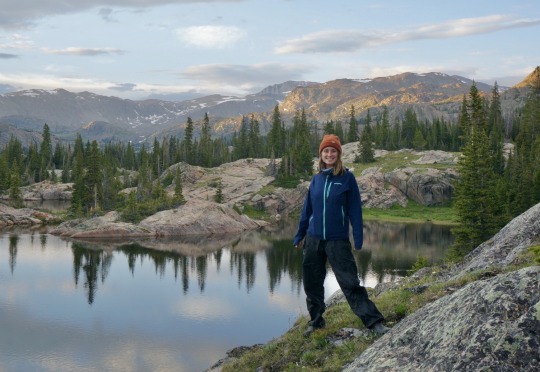
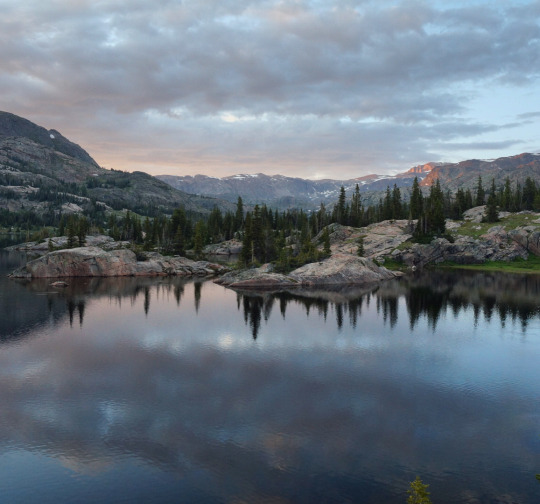
The road to the Black Hills
Lost Twin Lake
The view from lost twin lake
Middle Tensleep Creek
Ditto
Lake Helen
Intrepid hiker at Lake Helen
Sunset on Lake Helen
4 notes
·
View notes
Text
Camping
“Camping,” Sam likes to say, “Is the only way to travel. Give me a quiet spot in the woods and flat ground where I can pitch my tent over a five star hotel any day.”
After our second day of driving, we pulled into Myre-Big Island State Park, just over the Iowa border into Minnesota. The endless rolling cornfields yielded to an outpost of the great north woods hugging the shores of the first of the state’s 10,000 lakes. A walk through the forest revealed a birder’s nirvana - Indigo Buntings! American Redstarts! — and we set up our new tent and started cooking a pasta dinner on our new camp stove in a quiet grove of old-growth maples. Paradise!
No sooner had the pasta hit the water than a peal of thunder came rumbling out of a near-cloudless sky. We looked at each other dumbly, and then the sky opened up. We frantically chucked our boxes of food, our duffels of clothing back into the car, and donned our rain gear. Problem solved! Nature overcome!
Dinner ready, Sam went to drain the pasta, and promptly dumped 90% of the rigatoni onto the forest floor. Sam swore. Jaime laughed hysterically. Sam began scraping the pasta into a trash bag. Jaime began boiling a new pot of water. We enjoyed an “appetizer” of the dozen noodles that survived the disaster. “I feel nauseous,” said Jaime, who stood up, turned around, and projectile vomited her noodles into the bushes. “Oh my god are you ok?” asked Sam. Jaime laughed maniacally.
We were half-done with our main course when a raccoon the size of a bear cub waddled brazenly up to the campsite and began sniffing around our spilled pasta water. We jumped. “Get out of here!” we shouted. We threw rocks. Jaime launched a 10 foot branch in his direction. He looked at us like we were the problem, and went on about his business. We named him Eugene, and he was our companion for the evening.
The rain stopped. Jaime’s meal stayed down. Eugene eventually ambled off to terrorize other campers. We slept, eventually. Camping!
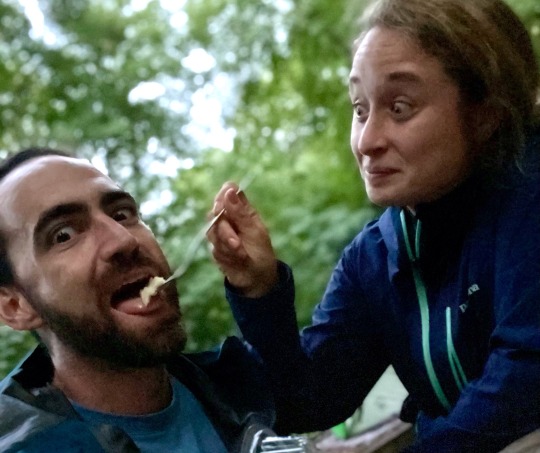
[This entry posted from BHC Tire & Service Center of Worland, Wyoming.😑]
3 notes
·
View notes
Text
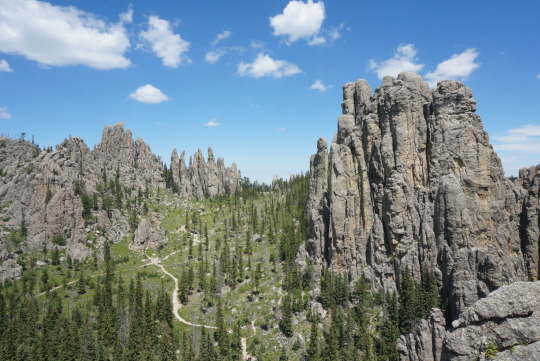


For the Sioux, the Black Hills of South Dakota and Wyoming are the home of the Great Spirit. To the white man, these are the Cathedral Spires, which sit beneath the summit of Black Elk Mountain, the highest peak between the Rockies and the Pyrenees. A few miles below, you can dip in Sylvan Lake, an exquisite alpine tarn overrun by humanity bobbing in inflatable flamingos and hollering from their paddleboards.
3 notes
·
View notes
Photo
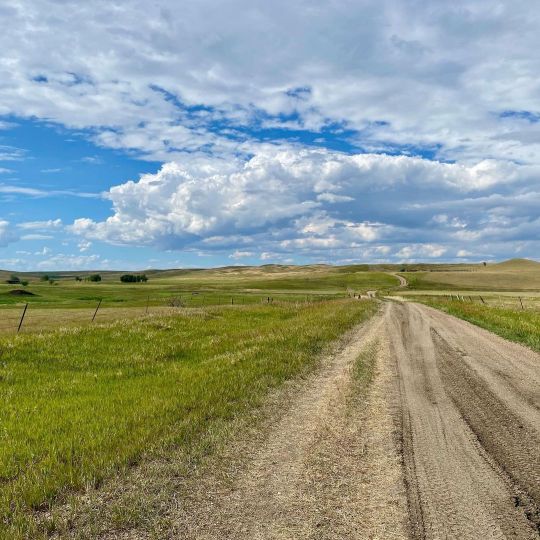
South Dakota! https://www.instagram.com/p/CQy28d7neOy/?utm_medium=tumblr
4 notes
·
View notes
Text
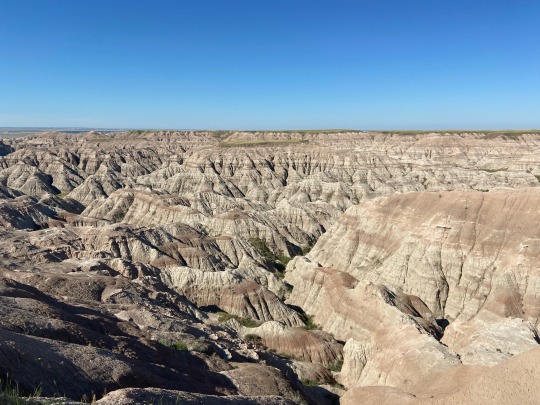

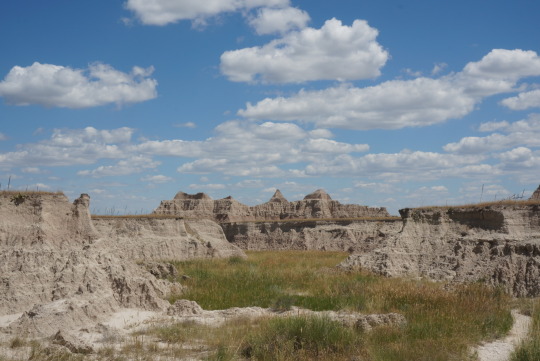

After a few long days driving across the cornfields and prairies of the midwest, it was both jarring and satisfying to see the grassland ripped open, like a giant plow carved up the earth, striated rock sculpted into alien sandcastles. Badlands, 6/29.
3 notes
·
View notes
Photo

Lake 1 of 10,000 (at Myre-Big Island State Park) https://www.instagram.com/p/CQrbrJYLI96aLSdJkQESbnnuWikmiVr6UXlRCo0/?utm_medium=tumblr
3 notes
·
View notes
Text
Influence
At least one person, as I told them about our grand summer trip to the Mountain West, asked if we would be using our time and social media presence (and, presumably, our world-breaking good looks) to be “influencers.” It struck me as a very sensible idea. We’re already going to the trouble of hauling our flawless bodies in front of stunning vistas, why not monetize our rugged and carefree lifestyle with some corporate partnerships and sponsored content?
Cruising across America in style and comfort 🇺🇸 Come live the #2012HyundaiSonataLife!
Get off the grid! (This post paid for by the Bureau of Land Management)
When it’s time to set up camp, I *can’t* get by without my 8x10 medium-duty poly tarpaulin - got mine at Petworth Ace Hardware! (link in bio)
But no, what with my 298 IG followers (half of whom are certainly bots… looking at you, “nk1234bb”), it won’t be the influencer life for us this summer (though I do earnestly recommend the above-mentioned tarp). It’s for the best. The mountains are nice because nobody’s there; goodness knows I’m not trying to influence you or anybody else to crowd our campsite.
Instead, we’ll be logging our journey in words and pictures for no benefit except posterity and pleasure, and so that our families have a set of last-known coordinates, should we decide to take up a more rustic life. And what better medium to ensure that we don’t accidentally influence anybody than an old fashioned Tumblr Web Log. Believe, me, I was as shocked as you surely are to discover this site still exists.
So here we go. Eight weeks! We’re leaving DC tomorrow morning, first stop Indianapolis, and then on to the Badlands, the Black Hills, the Bighorn, the Tetons, the Sawtooth, the Beartooth, and perhaps the Wind Rivers— a gluttony of mountains and rivers and lakes— before we wend our way eastward again for the simple pleasures of New England in late summer. Follow us here! Or don’t! We’re not trying to tell you what to do!
4 notes
·
View notes


